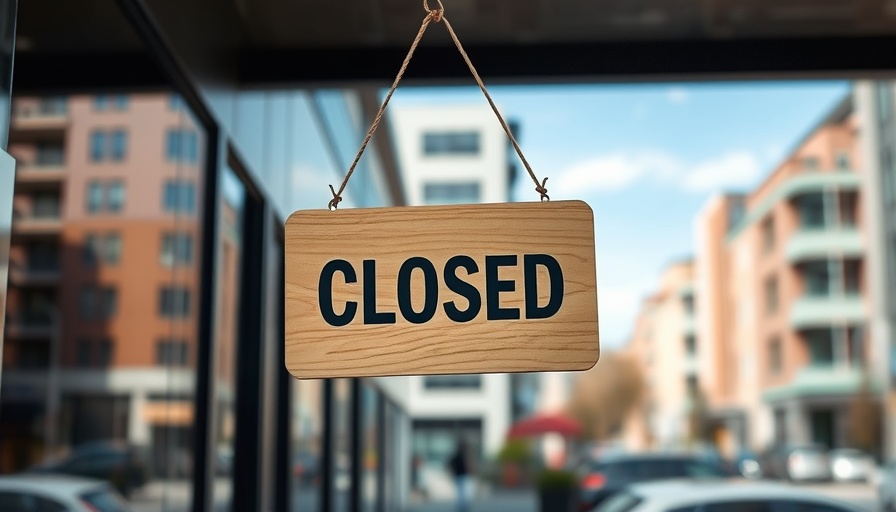
The IPO Market's Fragile Momentum Amid Government Shutdown
The initial public offering (IPO) market has recently been characterized by significant activity, with companies eager to take advantage of surging investor interest. During the third quarter of 2025, 64 IPOs successfully raised a staggering $15.3 billion, marking the most robust quarter for new offerings since 2021. However, just as this momentum seemed poised to carry through the fall, the government shutdown that commenced on October 1 threatens to derail this resurgence.
Understanding the Risks: How a Government Shutdown Impacts IPOs
The catalyst for this volatility lies in the operational limitations imposed on the Securities and Exchange Commission (SEC) during the shutdown. With only essential functions active and a significantly reduced workforce, the SEC is unable to process routine IPO documentation. This includes crucial prospectus reviews and the clearance of comments necessary for companies looking to go public.
“It’s bureaucratic purgatory at the worst possible time,” states Michael Ashley Schulman, CIO at Running Point Capital Advisors. Companies like actress Jennifer Garner's baby food venture, Once Upon a Farm, and electric aircraft manufacturer Beta Technologies find themselves in limbo, unable to proceed with planned IPOs.
A Temporary Setback or a Long-Term Impediment?
Despite the current impasse, industry experts assert that the IPO market’s recovery is likely to resume once the government reopens. This optimism stems from a strong backlog of deals and favorable investor sentiment, which has notably supported recent high-profile launches like Peter Thiel-backed Bullish and Figma, raising over $1 billion each.
“Strong investor demand and significant inflows to IPO-themed funds will continue to lure companies to the market,” says Lukas Muehlbauer of IPOX research firm. While prolonged shutdowns can dampen market sentiment and inject volatility into trading, many analysts believe the fall window typically represents a peak period for IPOs, with the potential to bounce back quickly.
Historical Context: Lessons from Previous Shutdowns
The longest government shutdown on record, which lasted 35 days from December 2018 to January 2019, serves as a stark reminder of the potential fallout on the financial markets. At that time, the IPO landscape saw a sharp decline in activity, with only a handful of companies managing to navigate SEC constraints by pre-locking IPO prices. This historical precedent highlights the fragility of market momentum during such political standoffs.
Future Insights: Will the IPO Market Survive This Challenge?
Looking ahead, the resilience of the IPO market will largely depend on how swiftly the government can resolve funding disputes. The potential for a short-term stagnation exists, but many believe that solid foundations built through Q3’s growth will allow the market to rebound robustly once operational normalcy resumes.
Anthony Saglimbene, chief market strategist at Ameriprise Financial, emphasizes that “IPO activity will likely remain solid,” outweighing near-term disruptions from the shutdown. Trends suggest robust demand will continue into 2026, as eager issuers line up, hoping to attract investor interest even amidst uncertainty.
Key Players in the Upcoming IPO Landscape
Several high-profile companies are on the cusp of going public, including Medline—a leader in medical supplies—and SoftBank-supported PayPay. Their readiness highlights the existing pent-up demand for IPOs and affirms the sentiment that there remains substantial investor appetite for new listings.
As firms await the reopening of the SEC, the broader marketplace is watching closely. Investors and analysts alike are keen on how the upcoming negotiations in Congress will influence both immediate market activity and the longer-term fiscal environment for IPOs.
What Investors Need to Know
Navigating this volatile climate requires keen discernment. Investors should remain alert to news emerging from Washington that could impact IPO timelines. Understanding that the fundamentals remain strong will be crucial for those looking to invest in upcoming IPOs, as a robust aftermarket performance indicates potential for profitable investment opportunities.
While the current uncertainty may feel daunting, history suggests that quality offerings will ultimately prevail, allowing the IPO market to thrive once more—a testament to its resilience amid political turmoil and economic fluctuations.
 Add Row
Add Row  Add
Add 




Write A Comment